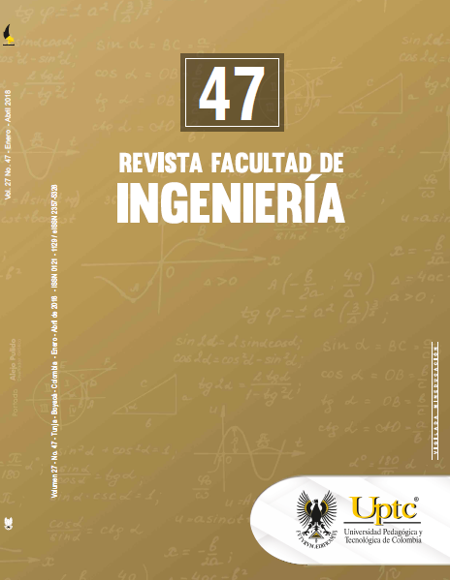Effect of heat treatment on the tribological properties of Nickel-Boron electroless coating

Abstract
Nickel-Boron autocatalytic coatings are widely used in several industries to improve mechanical properties of materials such as hardness and wear resistance. Tribological properties were evaluated in Ni-B autocatalytic coatings deposited on AISI/SAE 1018 carbon steel before and after a heat treatment at 450 °C for one hour. Tribological tests were carried out by dry sliding, using a load of 5 N and a sliding speed of 0.012 m/s, in a homemade ball-on-disk tribometer, which followed ASTM G99 standard. According to the tribological evaluation, the heat treatments applied to Ni-B coatings improved their tribological performance. This research corroborates that by applying an adequate heat treatment, hardness and wear resistance of Ni-B coatings can be improved significantly.Keywords
electroless, heat treatment, Ni-B coating, tribological properties
References
- P. M. K. K. Hari Krishnan, S. John, K. N. Srinivasan, J. Praveen, and M. Ganesan, “An overall aspect of electroless Ni-P depositions – A review article,” Metall. Mater. Trans. A, vol. 37(6), p. 10, 2006. DOI: http://doi.org/10.1007/s11661-006-0134-7. DOI: https://doi.org/10.1007/s11661-006-0134-7
- G. O. Mallory, and J. B. Hajdu, Electroless Plating: Fundamentals and Applications, Noyes Publ. New York, 1990.
- B. G. B. Oraon, and G. Majumdar, “Parametric optimization and prediction of electroless Ni-B deposition,” Mater. Des., vol. 28(7), pp. 2138-2147, Jan. 2007. DOI: http://doi.org/10.1016/j.matdes.2006.05.017. DOI: https://doi.org/10.1016/j.matdes.2006.05.017
- F. Delaunois, and P. Lienard, “Heat treatments for electroless nickel–boron plating on aluminium alloys,” Surf. Coatings Technol., vol. 160 (2-3), pp. 239-248, Oct. 2002. DOI: http://doi.org/10.1016/S0257-8972(02)00415-2. DOI: https://doi.org/10.1016/S0257-8972(02)00415-2
- P. Sahoo, and S. K. Das, “Tribology of electroless nickel coatings – A review,” Mater. Des., vol. 32 (4), pp. 1760-1775, Apr. 2011. DOI: http://doi.org/10.1016/j.matdes.2010.11.013. DOI: https://doi.org/10.1016/j.matdes.2010.11.013
- C. Dervos, J. Novakovic, and P. Vassiliou, “Vacuum heat treatment of electroless Ni–B coatings,” Mater. Lett., vol. 58 (5), pp. 619-623, Feb. 2004. DOI: http://doi.org/10.1016/S0167-577X(03)00581-0. DOI: https://doi.org/10.1016/S0167-577X(03)00581-0
- S. Eraslan, and M. Ürgen, “Oxidation behavior of electroless Ni–P, Ni–B and Ni–W–B coatings deposited on steel substrates,” Surf. Coatings Technol., vol. 265, pp. 46–52, Mar. 2015. DOI: http://doi.org/10.1016/j.surfcoat.2015.01.064. DOI: https://doi.org/10.1016/j.surfcoat.2015.01.064
- K. Krishnaveni, T. S. N. Sankara Narayanan, and S. K. Seshadri, “Electroless Ni–B coatings: preparation and evaluation of hardness and wear resistance,” Surf. Coatings Technol., vol. 190(1), pp. 115–121, Jan. 2005. DOI: http://doi.org/10.1016/j.surfcoat.2004.01.038. DOI: https://doi.org/10.1016/j.surfcoat.2004.01.038
- T. S. N. S. Narayanan, K. Krishnaveni, and S. K. Seshadri, “Electroless Ni–P/Ni–B duplex coatings: preparation and evaluation of microhardness, wear and corrosion resistance,” Mater. Chem. Phys., vol. 82(3), pp. 771-779, Dec. 2003. DOI: http://doi.org/10.1016/S0254-0584(03)00390-0. DOI: https://doi.org/10.1016/S0254-0584(03)00390-0
- K. Krishnaveni, T. S. N. Sankara Narayanan, and S. K. Seshadri, “Electrodeposited Ni–B coatings: Formation and evaluation of hardness and wear resistance,” Mater. Chem. Phys., vol. 99(2-3), pp. 300–308, Oct. 2006. DOI: http://doi.org/10.1016/j.matchemphys.2005.10.028. DOI: https://doi.org/10.1016/j.matchemphys.2005.10.028
- D. C. Vitry, and F. Delaunois F., “How heat treatment can give better properties to electroless nickel- boron coatings,” La Metallurgia Italiana. Mons, Belgium, p. 6, 2009.
- V. Niksefat, and M. Ghorbani, “Mechanical and electrochemical properties of ultrasonic-assisted electroless deposition of Ni–B-TiO2 composite coatings,” J. Alloys Compd., vol. 633, pp. 127-136, Jun. 2015. DOI: http://doi.org/10.1016/j.jallcom.2015.01.250. DOI: https://doi.org/10.1016/j.jallcom.2015.01.250
- Y. Wang, S.-J. Wang, X. Shu, W. Gao, W. Lu, and B. Yan, “Preparation and property of sol-enhanced Ni-B-TiO2 nano-composite coatings,” J. Alloys Compd., vol. 617, pp. 472–478, Dec. 2014. DOI: http://doi.org/10.1016/j.jallcom.2014.08.060. DOI: https://doi.org/10.1016/j.jallcom.2014.08.060
- E. Correa, Direct deposition of electroless Nickel- Boron coatings on magnesium alloys, Universidad de Antioquia, Medellín, 2013.
- ASTM, Standard Test Method for Wear Testing with a Pin-on-Disk Apparatus. United States, 2017, p. 6.
- V. Vitry, Electroless nickel-boron deposits: Synthesis, formation and characterization; Effect of heat treatments; Analytical modeling of the structural state, Université de Mons, Bélgica, 2009.
- A.-F. Kanta, V. Vitry, and F. Delaunois, “Wear and corrosion resistance behaviours of autocatalytic electroless plating,” Journal of Alloys and Compounds, vol. 486 (1-2). pp. L21-L23, Nov. 2009. DOI: http://doi.org/10.1016/j.jallcom.2009.07.038. DOI: https://doi.org/10.1016/j.jallcom.2009.07.038
Downloads
Download data is not yet available.